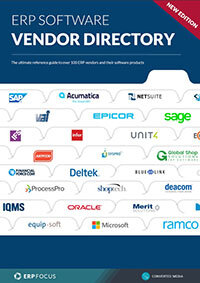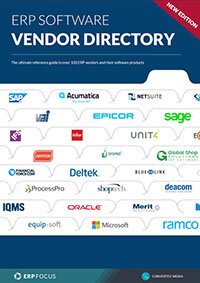How better visibility into operations improves the bottom line
How ERP data visualization can reduce errors and lead to increased customer satisfaction. A guest blog by Ultra Consultants, with tips on key metrics and more
Our team speaks with a wide range of manufacturers and distributors challenged with managing the complexity of their operations. A common theme running through these conversations is the desire these organizations have for improved visibility and transparency of information.
No matter the sector – food processors, industrial equipment, metal fabricators, distributors or others– the teams we talk to are hungry for real-time visibility into their entire operation to clearly see bottlenecks, adjust and improve productivity.
With access to more timely and accurate information, the assumption is that manufacturers use that data to take the needed action to improve business processes.
Driving real business process improvements
Data visibility and transparency helps drive quality, minimize late shipments, reduce inventory errors, improve customer satisfaction and much more.
Most ERP systems today capture, store, and trend a range of information such as quality, production, shipping, financial, supply chain activity and other data.
Yet even today, many organizations use a variety of manual methods, standalone spreadsheets and other patchwork systems to track data, and are in a poor position to react to change, optimize business processes such as production planning, or to improve relationships with customers and supply chain partners.
This is where “data visualization” comes into play – making key data actionable by visually aggregating numerous data points into displays that use colors, gauges, graphs, and other visual representations to display trends, averages, unusual results, compliance with goals or expectations, and other “actionable” information for managers and executives.
First steps to improving ERP data visibility
When it comes to data visibility, there’s work that needs to be done prior to a technology evaluation and selection. What’s key is for project teams to start out with a clear and simple path to unlocking the information, knowledge, and value in the company’s business transactions.
The most successful organizations take the needed time and effort to identify information value, and design a Business Information (BI) system that addresses their specific needs. This effort involves assessing:
- Key performance metrics that are meaningful to the type of business, function areas and users
- BI platform options that work within the current and desired future state of the organization
- Information access methods: scorecards, dashboards, data cubes for analysis, and report processing
- Business data dimensions, i.e., how teams want to look at the business
Taking the time to carefully assess and organize desired business data dimensions is the foundation for successful implementation of a BI system for true business process improvement.
Real-life success improving data visibility and business processes
As an example of putting this process into action, a medium-sized industrial equipment manufacturer was challenged to ensure on-time delivery of goods to customers. They had no real-time visibility info shop floor activity, capacity, inventory levels to fulfill orders and equipment effectiveness.
Before any technology evaluation or technology selection could take place, the team started with a close look at the transactions that make up the business processes of the business and the definition of the multiple dimensions of that information – the most effective way the organization wanted to look at the business. We advised the organization to focus on KPIs related to capacity, work in progress inventory, finished inventory, orders and delivery metrics. After that analysis of both the current and desired future state, the team was ready to identify information value, and move on to evaluating and selecting ERP that offer true business process improvements
Read more about this real-world success story at this case study library.
In addition, a timely white paper entitled “A Roadmap for Business Process Improvement” provides even more insight into what it takes to drive business process improvement.
For more articles on the benefits of ERP, head over to Ultra Consultants' ERP Software Blog.
Free white paper

ERP Software Vendor Directory
Put the most comprehensive ERP vendor directory on your desk today

Related articles
-

How to conduct a thorough ERP audit
The types of ERP audit, and step-by-step instructions on how to audit your ERP system
-

CMMC Compliance: What Aerospace and Defense Manufacturers Need to Know
Key insights on CMMC compliance, deadlines, and securing DoD contracts with CMMC 2.0 certificatio...
-
![Three direct links between ERP and manufacturing revenue [image by Snowing on Freepik] Three direct links between ERP and manufacturing revenue [image by Snowing on Freepik]](/pictures/W1siZiIsIjIwMjUvMDEvMjAva2ZwYjAzb3gzX1RocmVlX2RpcmVjdF9saW5rc19iZXR3ZWVuX0VSUF9hbmRfbWFudWZhY3R1cmluZ19yZXZlbnVlX2ltYWdlX2J5X1Nub3dpbmdfb25fRnJlZXBpa18uanBnIl0sWyJwIiwidGh1bWIiLCI0MDB4MjY2IyJdLFsicCIsImVuY29kZSIsImpwZyIsIi1xdWFsaXR5IDg1Il1d/Three%20direct%20links%20between%20ERP%20and%20manufacturing%20revenue%20%5Bimage%20by%20Snowing%20on%20Freepik%5D.jpg?sha=b45b02a140cc8680)
Three direct links between ERP and manufacturing revenue
What you need to know to help you achieve a return on your manufacturing ERP investment

